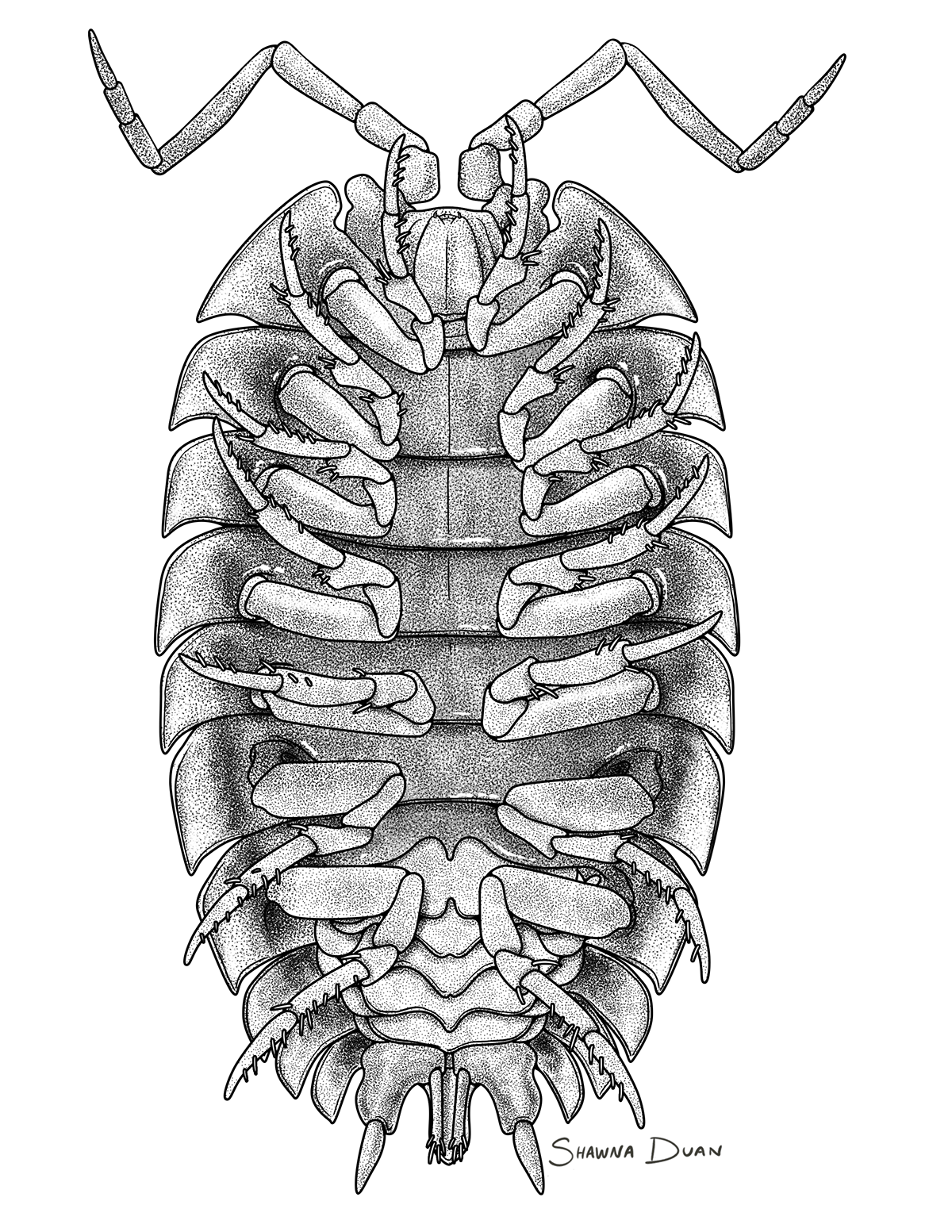Terrestrial Isopod Anatomy
Common Woodlouse Oniscus asellus
Created as a personal project
I became fascinated by the world of terrestrial isopods while setting up a bioactive terrarium in our living room. Isopods are crustaceans, like lobsters or crabs, not insects. Terrestrial isopods can grow to about 1 inch long, where aquatic isopods can grow as large as 16 inches. Female terrestrial isopods practice maternal care, as they carry newly hatched young in a brood pouch (marsupium). Look for terrestrial isopods in damp parts of your garden, such as under pieces of bark or leaves. They are a sign of a healthy soil and are important for nutrient cycling in the environment.

Anatomical illustration of common woodlouse
Terrestrial isopods are known by many names. Here's a few:
Woodlice
Pill Bug
Roly-poly
Potato Bug
Sowbug
Armadillo Bug
Chiggy Pig
What name have you heard for isopods?
By the way, the name 'isopod' has Greek origins, from iso-, meaning "same" and podos, meaning "foot".
Photo References:







How the illustration is made:
Did some preliminary background research

Word Document of basic isopod information
Hand drawn sketches while looking at photo references


Created inked outlines from the sketches in Adobe Illustrator

I brought these into Adobe Photoshop to do the stippling. I developed a set of stipple brushes to get the look I wanted.



Final stipple illustrations


